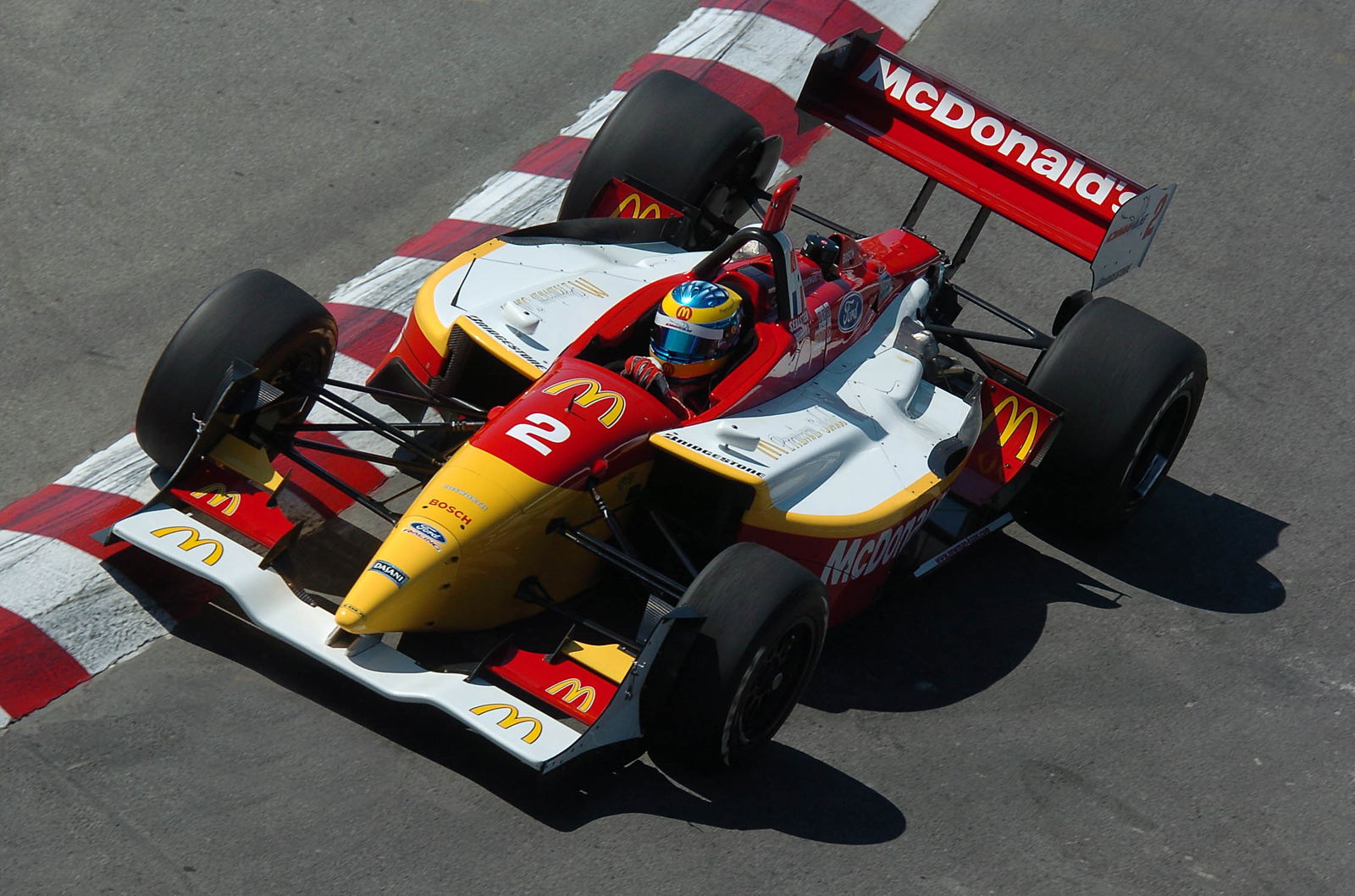Resurfacing underway at Indy.
Four time Indy 500 winner Al Unser was on hand to oversee the start of the biggest resurfacing project at the Indianapolis Motor Speedway since the original brick track surface was removed more than 30 years ago.
Unser joined track officials to ceremonially kick off the Speedway's historic track repaving project, which has an expected completion date in November and will see the removal of 18,500 tons of old asphalt and replacement with another 18,500 tons of fresh asphalt.
Four time Indy 500 winner Al Unser was on hand to oversee the start of the biggest resurfacing project at the Indianapolis Motor Speedway since the original brick track surface was removed more than 30 years ago.
Unser joined track officials to ceremonially kick off the Speedway's historic track repaving project, which has an expected completion date in November and will see the removal of 18,500 tons of old asphalt and replacement with another 18,500 tons of fresh asphalt.
Unser, one of only three four-time winners of the Indianapolis 500 and the race's all time lap leader, sat at the controls of the 40-ton machine that, over a four-day period, will remove the top 2.5 inches of the Speedway oval's asphalt surface.
"I've ruined a few race cars around here, so this is a different way of ruining the racetrack," Unser said with a grin.
The repaving is necessary due to cracks in the surface that have continued to expand and increase in number with the freeze-and-thaw cycle of every passing Indiana winter. Still, the Speedway surface remains one of the smoothest in Motorsports, leading Unser to extol the exacting standards Speedway officials maintain for the oval.
"It's amazing," he said, "the people at the Indianapolis Motor Speedway work very hard to make it the best racetrack in the world. It's smooth, and all of a sudden here we are bringing the asphalt up to make it better for next year. It's just a terrific indication of what they do at the Speedway to make the racing better for the drivers and fans."
The new surface should only improve racing even more at IMS, Unser said.
"It gives the cars a lot better grip, and grip is the essence of racing," he said. "You can work with the car a lot easier by setting the shocks and chassis without the bumps."
Contractors took four days to meticulously remove the 36-inch strip of 1909-vintage bricks, known as the "Yard of Bricks," at the Speedway's start-finish line. The bricks eventually will be cut into smaller pieces and sold to the general public.
The task of removing the top 2.5-inch layer of asphalt from the remaining 4,399 yards of asphalt that encompasses the 2.5-mile track requires equal care, but the milling process already was ahead of schedule only a few hours into the project.
"We think already with the progress that the machine has made, we could potentially gain three days on the schedule right now," said Kevin Forbes, director of engineering and construction for IMS. "And that's good because the schedule that was developed does not account for weather."
The asphalt milling machine and its operators are capable of working in rain, but the operation will likely come to a halt in inclement weather in order to maintain strict quality control, Forbes said.
"I don't think the quality will be good enough in the rain," Forbes said. "People are going to be too worried about keeping dry, and the material that the rotary brooms (that follow the milling machine) are pulling up, they will not be able to pull it up as well. It will be slush, and it will stay (on the surface), so I probably won't let them work in the rain."
The milling machine cuts a 14-foot wide swath in the asphalt and is chewing up asphalt at the rate of 45 feet per minute for the Speedway repaving project.
This is approximately half the speed at which construction crews perform the same task on a highway project, Forbes said, and the slower speeds simply reflect the need to create a surface capable of safely accommodating 220-mph racecars upon the project's conclusion.
"We don't want to take anything away from state highways because they are very well constructed," he said. "But it's a different application of forces, and it's different speeds. It becomes very, very critical that we give the drivers the smoothest, flattest, most predictable surface we can.
"If the drivers know the surface underneath them is very uniform, very reliable and very consistent, that will allow them to pull out all the stops in terms of their ability to drive their race car."
The project will provide benefits for fans, too. In addition to laying down a more water-resistant mixture of asphalt, crews also will install drains along the pit lane wall, helping eliminate problems with standing water on the inside of the main straightaway during inclement weather and allowing track crews to speed up the track-drying process.
